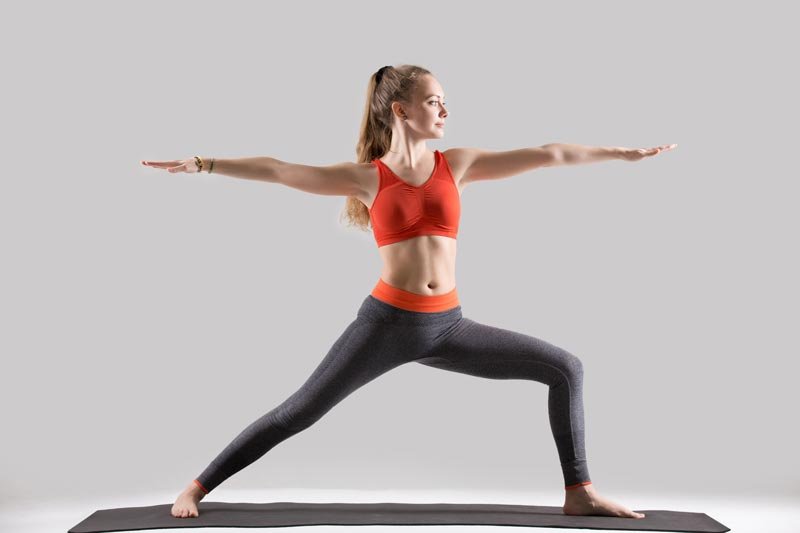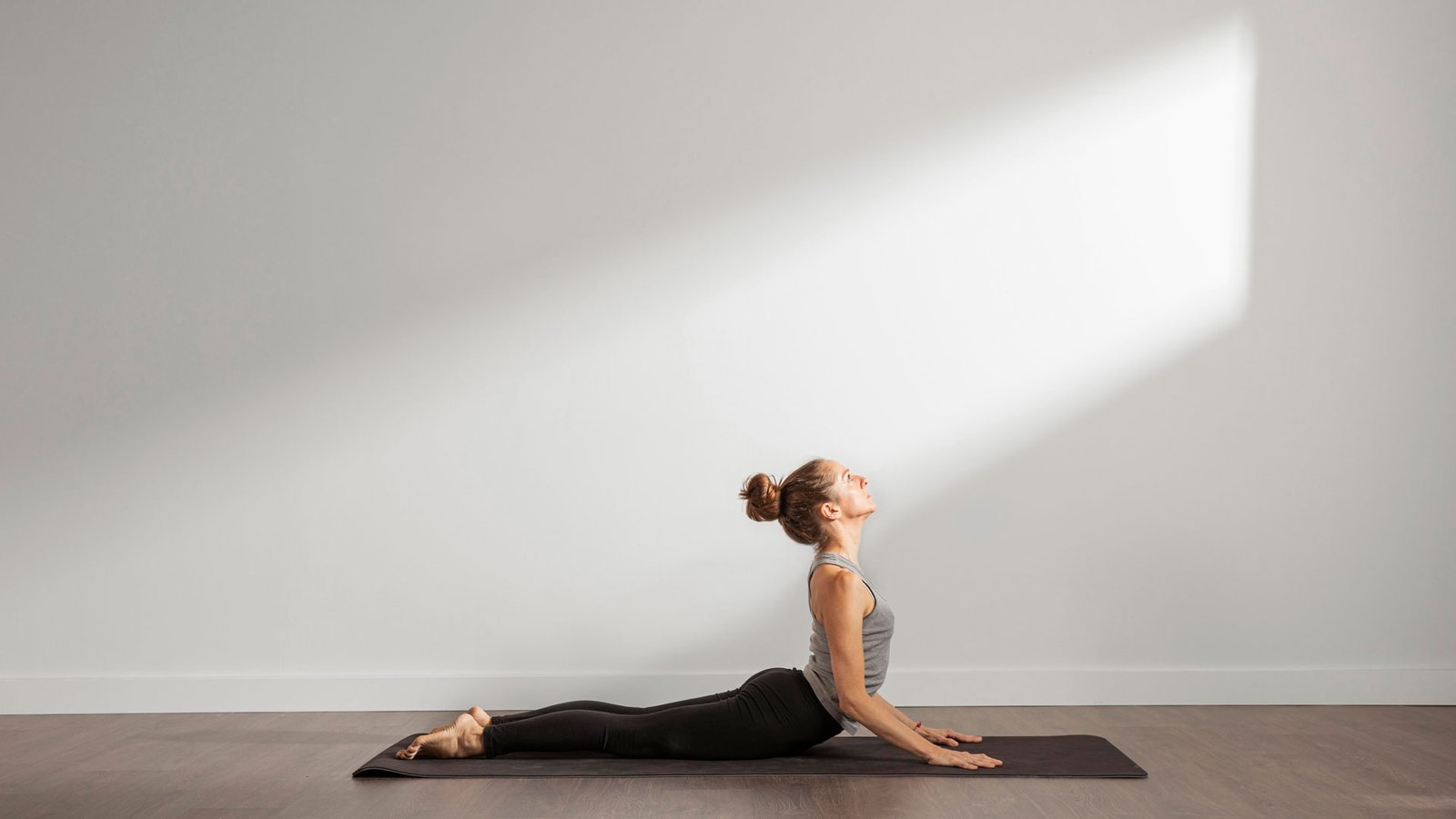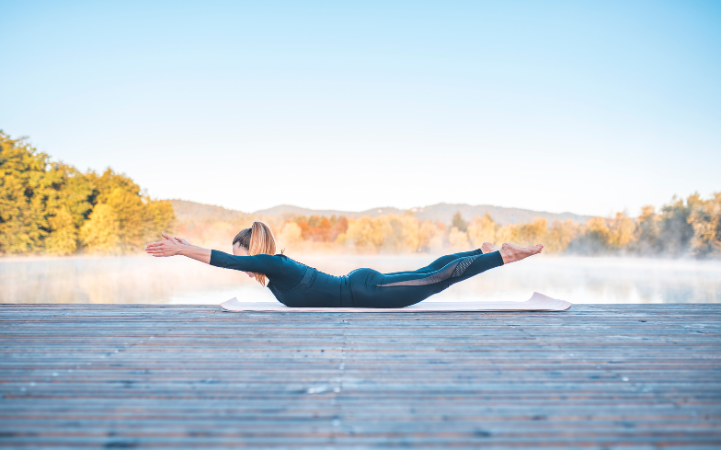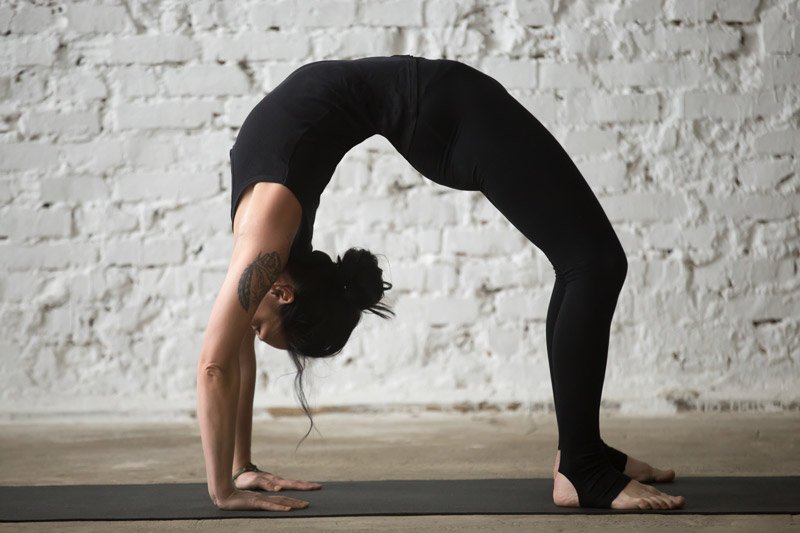Virabhadrasana 2, or Warrior Pose 2, is a powerful standing yoga posture that symbolizes strength, courage, and focus. Named after the mythical warrior Virabhadra, this asana strengthens the body, enhances endurance, and cultivates a sense of balance and determination. It is widely practiced in yoga routines for its ability to build strength, improve posture, and develop mindfulness.
Steps to Practice Virabhadrasana 2
- Starting Position: Begin in Tadasana (Mountain Pose), standing tall with your feet together and hands by your sides.
- Step Wide: Step your feet apart, creating a distance of about 3 to 4 feet between them.
- Turn Your Feet: Turn your right foot 90 degrees to the right so it points forward. Turn your left foot slightly inward, about 15 degrees.
- Align Your Heels: Ensure that your right heel aligns with the arch of your left foot.
- Bend the Front Knee: Bend your right knee to form a 90-degree angle, keeping the knee directly above the ankle. Ensure your right thigh is parallel to the floor.
- Stretch Your Arms: Extend your arms out to the sides at shoulder height, palms facing down. Keep your arms straight and energized.
- Engage Your Core: Maintain a neutral pelvis, and engage your core muscles for stability.
- Gaze Forward: Turn your head to look over your right hand, maintaining a steady gaze.
- Hold the Pose: Stay in the pose for 20–30 seconds, breathing deeply and evenly.
- Switch Sides: Straighten your right leg, return to the starting position, and repeat on the other side.
Benefits of Virabhadrasana 2
- Strengthens the Legs and Core: Builds strength in the thighs, calves, ankles, and core muscles.
- Improves Balance and Stability: Enhances coordination and balance by requiring a firm base.
- Stretches the Hips and Groin: Opens the hips and stretches the inner thighs, increasing flexibility.
- Promotes Postural Alignment: Encourages proper alignment of the spine, shoulders, and pelvis.
- Boosts Stamina and Endurance: Holding the pose develops physical and mental resilience.
- Enhances Focus and Concentration: The steady gaze (drishti) sharpens mental clarity and mindfulness.
- Stimulates Circulation: Improves blood flow, invigorating the body and promoting overall vitality.
- Relieves Back Tension: Engages the back muscles, helping to alleviate mild back discomfort.
Tips for Practicing Virabhadrasana 2
- Engage Your Core: Activate your abdominal muscles to support the lower back and maintain stability.
- Align Your Knees: Ensure your front knee stays directly above your ankle to prevent strain.
- Keep Shoulders Relaxed: Avoid tensing your shoulders; let them remain away from your ears.
- Extend Fully: Stretch your arms actively to create a sense of energy and openness in the chest.
- Adjust the Stance: If you feel unstable, widen your stance slightly or reduce the depth of your knee bend.
- Use Props if Needed: Practice near a wall or use a block under your back foot for added support if needed.
Cautions and Contraindications
- Knee or Ankle Pain: Avoid bending the front knee too deeply or modify the pose to reduce strain.
- Hip or Groin Injuries: Practice with care if you have tight or injured hip flexors or groin muscles.
- High Blood Pressure: Avoid gazing upward; keep your head neutral to reduce strain.
- Balance Issues: Practice with the support of a wall or chair if you feel unsteady.
- Pregnancy: Pregnant practitioners should practice a modified version with a less intense stance to accommodate the growing belly.
- Neck or Shoulder Tension: Keep the neck relaxed and avoid overextending the arms if they cause discomfort.
Virabhadrasana 2 is a dynamic pose that promotes strength, balance, and inner focus. By engaging multiple muscle groups and encouraging mindful breathing, it serves as both a physical and mental challenge. Regular practice of Warrior Pose 2 can help you cultivate endurance, flexibility, and a sense of calm determination. As always, practice with awareness and respect for your body’s limits, making modifications as needed to enjoy its full range of benefits.






